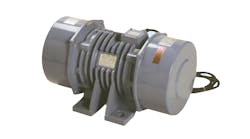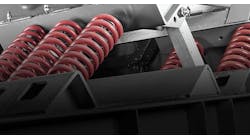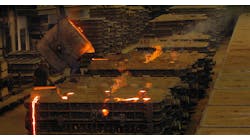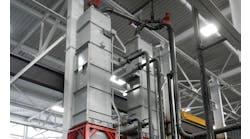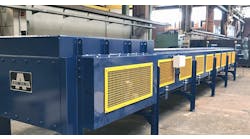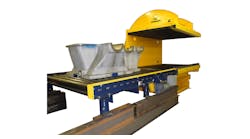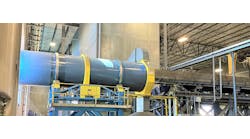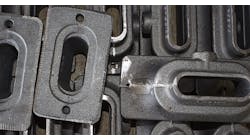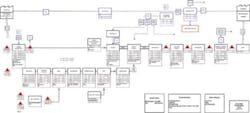Latest from Shakeout
At St. Paul Foundry we are using lean concepts to reduce landfill waste and lower energy consumption. Sustainable practices are a stated value. Green practices have resulted in significant cost savings and improved efficiencies.
Lean practices translate into faster time to market, which means we have industry-leading lead-times as low as six production days on make-to-order POs for significant-volume jobs —while holding no inventory. Our Kanban programs have a zero-day lead-time.
Lean History — Lean manufacturing has deep American roots. Benjamin Franklin wrote repeatedly about wasted time, reducing costs, and managing inventory. Frederick Taylor, the father of scientific management, made many contributions that can be seen as precursors to lean, but perhaps most important was the idea of continuous, incremental improvement backed up by measurable facts.
Franklin and Taylor influenced Henry Ford. In My Life and Work Ford wrote: “I believe that the average farmer puts to a really useful purpose only about 5% of the energy he expends. … Not only is everything done by hand, but also seldom is a thought given to a logical arrangement. A farmer doing his chores will walk up and down a rickety ladder a dozen times. He will carry water for years instead of putting in a few lengths of pipe. His whole idea, when there is extra work to do, is to hire extra men. He thinks of putting money into improvements as an expense. … It is waste motion— waste effort— that makes farm prices high and profits low.”
Edward Deming brought a synthesized model of the work of Ford and Taylor along with the statistical methods of Walter Shewhart to postwar Japan. Japanese industry experienced rapid growth in technology, quality, productivity, and market share as a result of adopting Deming’s recommendations.
Toyota took the work of Franklin, Taylor, Ford, and Deming and created the Toyota Production System, or TPS. It wasn’t really something new, but Toyota took the old, proven ideas and squished them around until they looked like something different. TPS is often referred to synonymously with Lean Technology.
Lean is Cultural
We can express our lean philosophy best by beginning with the five lean principles of TPS and, in the spirit of continuous improvement, adapting them to our values and the needs of a batch melt job shop.
Challenge. We challenge ourselves daily to recognize the gaps between where we are and our vision of being “Best in Class”. We have the courage to see where improvement is needed and do what must be done to make the change.
Kaizen. Continuous improvement is an infinite feedback loop. We challenge the status quo, see opportunities for improvement, act upon them, and start over. We are most comfortable in an environment of change and evolution. Stasis is stagnation.
Genchi Genbutsu. The closer one can get to primary information, the better the decision and the faster the change. Go to the shop floor. Use empirical data. Read primary documents. While discussion and consensus are important, talk can be its own form of stasis
Respect. TPS stresses respect for people. We embrace this, but expand it to a broader sense of respect. We respect ourselves, each other, the world around us, and the source of our gifts. It is from this sense of respect that our stewardship of the environment becomes a stated value. Sustainable practices are those that assure a future world with continuing abundance.
Teamwork. Teams, whether two people, all of the employees of St. Paul Foundry, intercompany teams between foundry, machine shop, and customer, or groups of organizations banding together to create standards or research — good, functional teams get things done. It is a social construct that promotes civil society and drives progress forward.
Sand Reclamation Project
St. Paul Foundry has a long tradition of leadership in sustainable practices. In 1993, Governor Arne Carlson formed The Minnesota Round Table on Sustainable Development. Anita Ryan, a member of the Round Table and a third-generation owner of St. Paul Brass Foundry Co., commented, “We found that sustainable foundry practices were not only good for the environment and the community, but they were great for business. They improved quality, throughput, and resulted in direct and indirect gains in our bottom line performance.”
St. Paul Foundry recently undertook a major renovation of our no-bake shakeout operation. In the planning phase we used many lean tools including Kaizen, spaghetti diagrams, brainstorming, and Gemba. We analyzed flow and identified waste. In the end we reduced transportation, inventory, over-processing, motion, overproduction, and defects.
One of the goals of the project was to reclaim and reuse silica sand. Prior to the project we were landfilling nearly 60% of the sand after a single use. A sieve analysis of the disposed sand showed it to be nearly identical in grain distribution to the new sand being purchased.
The solution was to install a three-stage shakeout/classifier/reclamation cell. The shakeout breaks the mold down into individual sand grains. The classifier liquefies the sand bed to remove dust and fluff. St. Paul Foundry’s engineering and fabrication team developed stage three. Stage three removes excess binder from the sand grain.
Initial in-process trials with the system allowed us to reuse 80% of the sand, which translates to a 67% reduction in landfilled sand. It was a good start. But, lean says the status quo can always be improved, so we looked closer. We learned several things. For instance, the more sand is reused the less prone it is to expansion defects.
We also learned sand that already has a little binder on it will allow new binder to wet to it more readily. We were able to reduce our binder additions on reclaimed sand by 50% with no loss of mold strength. No bake binder chemicals are petroleum based. The price goes up whenever the price of oil goes up. By using properly reclaimed sand we can reduce binder levels, saving money and resources at the same time.
Through trial and error – and a lot of welding rod - we tuned our reclaimer so it scrubbed the sand grains enough to both allow wetting of new binder and leave a little tooth for good adhesion.
These efforts allowed us to reuse 92% of our sand. That is an 87% reduction in landfill waste from our original starting point. That’s where we are today. But we’re not done. We are still throwing away sand grains before they are fully spent. We have stated that we don’t want to landfill a single grain of sand, only spent resin and silica fines. Our next continuous improvement round will allow us to use reclaimed sand in cores and to blend it into our facing sand. We expect to be above 95% reclaim and using even less resin when we get there.
Lean Green 2.0 Partnership — Three years ago we entered a partnership with Enterprise Minnesota, Minnesota Technical Assistance Program, and four other foundries. It was funded by a grant from the Minnesota Job Skills Partnership and in-kind contributions from partner foundries. The goal was to use lean concepts to achieve green results. The work was not limited to Green objectives: any reduction of waste was a potential benefit. In phase one every employee was trained in Lean 101.
The next phase used Kaizen events to identify and prioritize potential areas of benefit. Then, three value-stream mapping sessions were conducted to analyze in detail where waste was occurring, what the potential causes were and possible solutions. Action plans were developed, teams were formed and deadlines were given.
One of a number of areas identified for improvement was the melt deck operations and specifically the timing of heats to reduce holding metal in the furnace for too long. Holding of metal had a number of negative effects, some of which were synergistic including superheating, which led to gassing of the metal. Other effects were excess gas or electricity inputs, cascading waiting by other departments or individuals dependent on timely completion of the melt. Cross-dependencies were identified where a late heat could hold up molding and a slowdown in molding could cause holding of metal. Issues were identified with the timing of spectrometer calibrations that held up all departments. Many of the solutions involved little or no investment, but rather a change in process, training, or scheduling.
The results were synergistic, too. Eliminating the root causes of waiting reduced energy consumption, improved the quality of the melt, reduced the amount of trim additions, improved melt loss through formation of fewer oxides, improved flow, and reduced calls of management to the shop floor.
We are seeing significant results. But as we know, we can’t be satisfied with that. We need to go back and ask again, how can we make it better?

